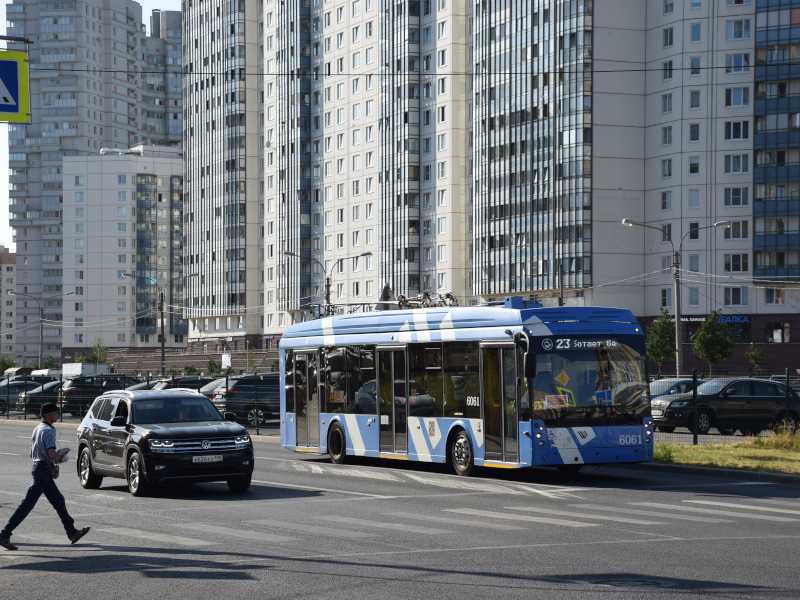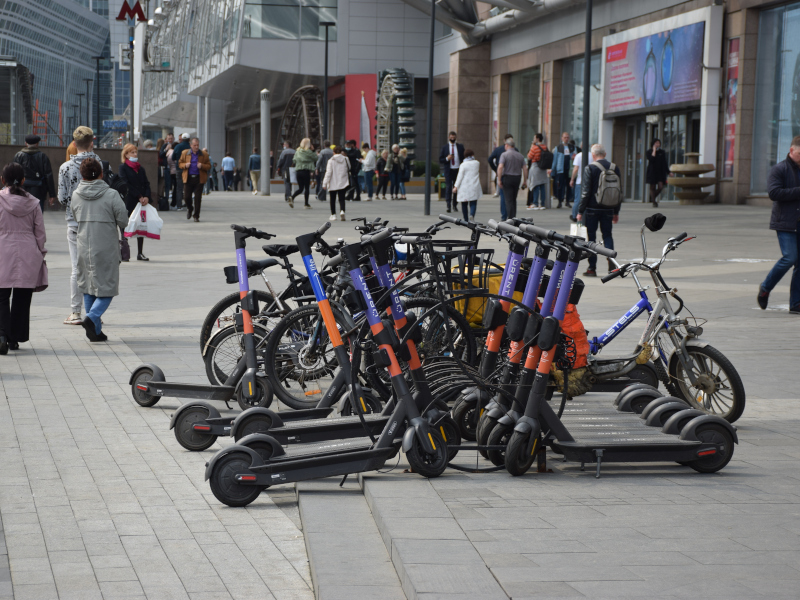Expert Talk with SIMETRA: A Vast and Open Field
January 11th, 2022 | by GEONATIVES
(6 min read)
Russia is huge. Our knowledge about its mobility sector is small. Time for a change.
In late November 2021, the GEONATIVES team had the pleasure to speak with Christian Boettger (Global Sales Director, on the left) and Vladimir Waldin (Public Transport Solutions Director, on the right) of SIMETRA, located in St. Petersburg, Russia.

SIMETRA’s business is based on three pillars:
- distribution of data and commercial software (here: PTV Group, Schlothauer & Wauer, Optibus, TomTom and own solutions)
- traffic planning and mobility management consultancy services
- software development (transport management system) RITM³
In addition, they are co-founder of the Association of Transport Engineers (est. 2015) which acts as a platform for information exchange between interested parties, organizes conference, releases papers and books, and works with other associations like Road and Transportation Research Association (FGSV), International Union of Public Transport (UITP) and the International Transport Forum (ITF). Their goal is to promote and professionalize skills for planning and modeling of traffic and bring together interested stakeholders, which plan, model and manage traffic flows and mass transit. Overall, they see themselves also as one of the driving forces trying to establish transport planning and modelling as a technology in Russia and other countries from the former Soviet Union.
Data Collection and Sharing
With this profile, SIMETRA was the ideal partner to educate us on the Russian market. Having our idealistic picture of a digital twin in mind that can be re-used for various purposes, we soon learned that mobility data in Russia are not easily shared for three main reasons:
- First, data that may reside within different municipalities will typically not be of comparable nature and/or format. Often, self-developed formats and rather machine form of information storage (like plain Winword, Excel etc. files) rather than data processing software instead of standard formats are used. There is hardly a standard for collecting, processing, storing, and providing data. This means that any time, SIMETRA starts to work on a project, they have to condition the data accordingly. A job, which is time consuming and costly, and you have to pre-assess every project from scratch because often you can’t reuse the implemented data importers. In the worst case, data may just consist of scanned papers, and no formal database may be available at all, and you may have to start counting vehicle types and numbers on the road by yourself for example. Technically, such kind of data has to be provided by municipalities as open data but if there is no data or only on paper… you get the point.
- Second, mobility planning is usually a fully paid service. This means, the customer owns not only the initial data but also all resulting data and models. It should be provided as open data afterwards but platforms for that are often not existing. Not only does this limit the chances of re-using results; it almost completely eradicates the incentive of providing digital twins in standardized formats. Although SIMETRA constantly tries to “educate” their customers on the benefits of shared models and data, this idea is not (yet) well received.
- Third, the trust in data is rather mixed. For infrastructure and other “tangible assets”, it is easy to verify the quality and trueness of available data (remember: “trueness” is one key ingredient to accuracy). Just measure it for your own or have a look into aerial data if you are unsure. For time-variant data (e.g. occupancy rates of transport means) or social data, it may be hard to perform a verification. Therefore, any planning based on unverified data sources will always need to take a larger margin-of-error into account. Recently, for example, a state-driven census was conducted but a viable share of citizens never got in touch with a survey. If a distribution of population is not reflecting reality properly, a traffic demand model derived from this data can get inaccurate.
SIMETRA got used to verifying data with their own methods and are, thus, able to increase the reliability of their models.
One thing that is no problem in Russia, compared to the average European country, is data privacy. There is hardly a discussion about what data may be collected and used – at least in the domain of mobility.
Future Traffic
Asked about autonomous driving and multi-modal traffic concepts in Russia, SIMETRA told us the story of two Russias: Moscow – and the rest. The fact that 80 percent of Russia’s land mass is inhabited by the same number of people found in Moscow alone illustrates this really nicely. Therefore, any introduction of mobility concepts will have to concentrate on large municipalities like Moscow, St. Petersburg (in smaller share) and a bit of over paw of other largest cities like Yekaterinburg, Kazan, Nizniy Novgorod etc.



For autonomous trucks, there seems to be currently only one project in the planning under aegis of the Ministry of Transportation: a stretch of newly built toll highway M-11 between Moscow and St. Petersburg.
Why not more? One reason is prioritization. It is more important to allocate budgets for school children and their transport in remote areas than adding yet another choice of transport in a large city. Another reason is a lack of general interest in and knowledge about future traffic concepts. Where we see competition within Germany or the US, for example, between federal states (e.g. Bavaria’s “Digital Motorway Test Bed” vs. Baden-Württemberg’s “Testfeld Autonomes Fahren”, or San Francisco, CA vs. Pittsburgh, PA), there seems to be no incentive for any region to excel within the Russian Federation. No wonder, though, considering the overweight of Moscow. Only the “IT villages” like Innopolis near Kazan and Skolkovo next to Moscow are foreseen as future mobility test beds.
But there isn’t nothing. Technology companies like Yandex or Sber Autotech are potential candidates for beefing up the mobility roadmap. However, as any other big tech player, they are driven by huge amounts of private capital and tend to be very closed when it comes to sharing data and so they won’t solve many of the issues we mentioned earlier.
Beyond the Streets
A quick side discussion led us to rail transport. There are, indeed, plans to have fully automated metro operations. The pilot project is supposed to be Kazan Metro. Although covering one line only with 11 stations, this metro system in general is the most recent in Russia and may go to GoA 4 (Grade of Automation) which means fully driverless operation.
A “fun fact” is that Russian metro (e.g. in Moscow) operators are able to keep a 90-second-interval even without automatic operations (comparable to operations in Japan – but don’t dare compare this to Germany!). The human skill set, as it seems, is giving automated system still a hard time in terms of efficiency.
Think Small
Back to the street level. Our final topic of discussion was centered around autonomous minibuses (robo taxis) as we see them coming in many cities across the planet. The manually driven ancestors don’t seem to stand on a solid legal basis in Russia. Not in terms of the technology they bring or use but due to the fact that they would only concentrate on a highly profitable niche of the market.
As we understood, transportation is considered part of the infrastructure. And this means that general availability is a key issue. If commercial providers only operate on certain routes for certain hours, the general provision of transportation services might suffer.
On the other hand, “bus-on-demand” is available as a service in Moscow since October 2021. But this is not an automated system, and it falls far short of being comparable to high-tech robo taxis.
What occurred as an oddity in our discussion was the fact that in cities like Samarkand, Usbekistan, minibuses (six seats) make up roughly 30 percent of traffic and there is a need to replace them with larger buses in order to contain congestion on the streets. In other countries, though, deploying robo taxis with a small number of seats is considered the future of transport if ride-pooling really works. We’ll stay curious.
Summary
We had a great talk with Vladimir and Christian. We understood that mobility data are available in Russia, but getting them in standardized formats, predictable quality and sufficient reliability is a challenge.
SIMETRA is highly engaged in taking this challenge and educating the stakeholders about the benefits of a consistent and open data processing toolchain and a universally applicable digital twin.
Russia is a country with a clear split of transportation needs between rural areas, municipalities, and Moscow.
We are fascinated by what we heard and learned, and we will keep an eye on the future developments in Russia.
If you like to get more informed about what happens on the mobility market in Russia – attend at the annual transport planning and modelling conference from the Association of Transport Engineers, which is partly translated to English.